Language
- Deutsch
- English
- Español
- Français
- Italiano
- Nederlands
- Português
Currency
- AUD Australian Dollar
- CAD Canadian Dollar
- EUR Euro
- GBP Pound Sterling
- SGD Singapore Dollar
- USD US Dollar
- ZAR Rand

One thing is for sure: Kenya consistently ranks as one of best places to go on safari in Africa. Every year, thousands of safari goers see the country’s astonishing wildlife areas and spectacles like the Great Wildebeest Migration.
Thanks to a mild climate, wide open spaces, and an abundance of wildlife in heavyweight destinations like the Masai Mara and Amboseli, Kenya delivers sensational safari experiences any time of the year.
If you’re planning a first-time safari in Kenya, you’ve come to the right place. Since 1998, we’ve tailor-made unforgettable trips to the ‘birthplace of safari’ for thousands of travellers from across the globe. In this handy Kenya safari guide, we share our best planning advice – from travel budgets and the top wildlife areas to Wildebeest Migration timing and the best places to stay.
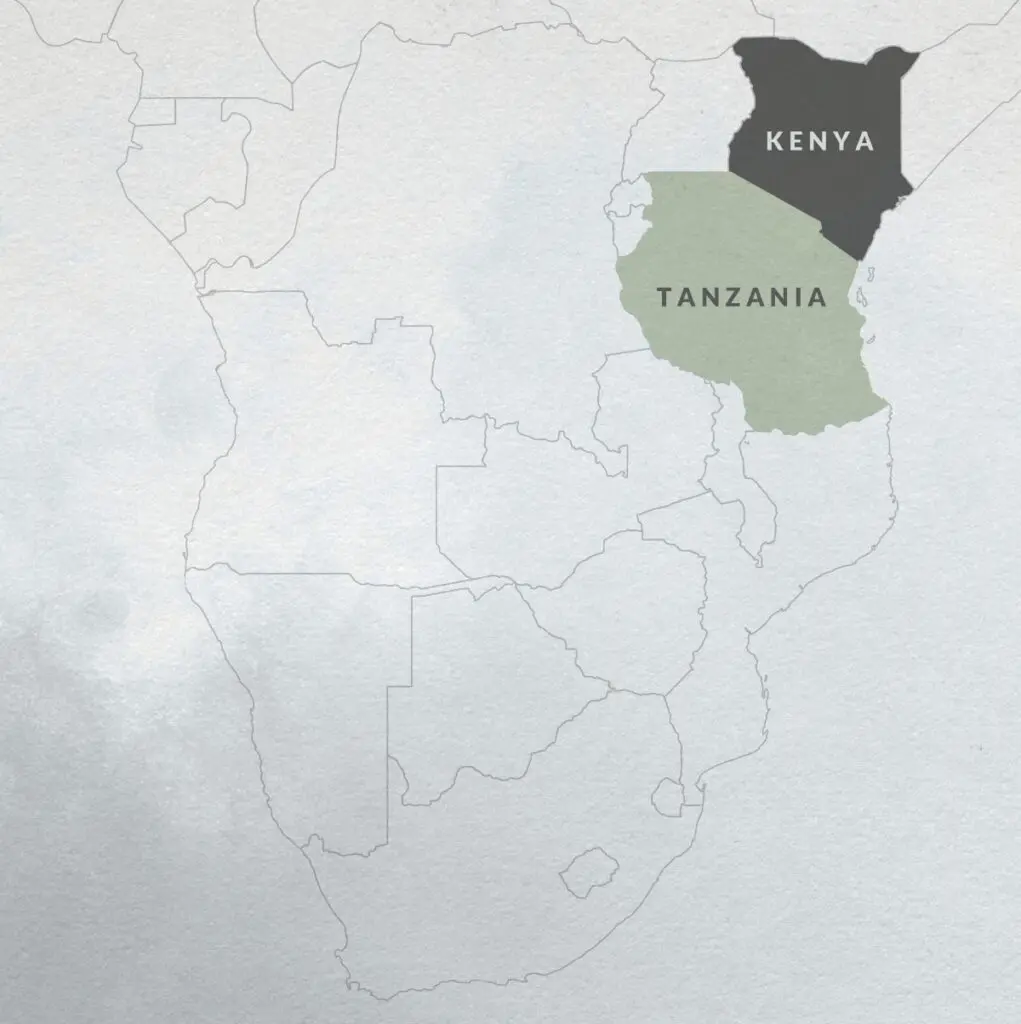
Kenya is a fairly small country in East Africa. Its capital and central transport hub is Nairobi, which is more or less in the centre. Safari travellers fly into the international airport known as Jomo Kenyatta and use the domestic airport next door – called Wilson – for connecting flights to safari destinations.
Using Nairobi as a central point, these are the major areas to the north, south, east and west of the capital:
This is typically where all Kenya safari itineraries start, as Nairobi is the country's logistical hub. The area around Nairobi also has plenty of conservation areas, the most popular being Nairobi National Park, Lakes Nakuru and Naivasha as well as the Aberdare Mountains. The land is green and lush during the rainy season while the lakes attract plenty of bird- and wildlife.
The biggest name in western Kenya is of course the Masai Mara National Reserve, home to some of Africa's best year-round game viewing as well as the annual Wildebeest Migration. Present in their hundreds of thousands from about August to November, the massive wildebeest and zebra herds attract constant attention from Africa's top predators, and consequently visitor numbers are high in peak season (about June to October).
The biggest reason that the Masai Mara attracts the Migration is because its open, flat savannah produces superb grazing. There are few thickets, forests or high peaks: the wide landscape is a safari classic with green grass that turns golden as the seasons pass. The plains attract game like reticulated and Masai giraffe, topi, Thomson's gazelle, and are dotted with occasional flat-topped acacia trees.
The further north you travel, the drier and hillier the landscape becomes as the area doesn't benefit as much from the rains received by the south-west of Kenya.
That being said, there are still superb safari options here, including Samburu National Park, Lewa Wildlife Conservancy and Laikipia. The more arid conditions suit species like gerenuk, the Somali ostrich and Grevy's zebra. Lewa is also the best place in Kenya to see rhino regularly and consistently. On a clear day, you may be lucky enough to see Mounts Kenya and Meru.
Because it shares the longest part of Kenya's border with Tanzania, this is the best place to see snow-capped Mount Kilimanjaro, the highest peak in Africa and the tallest free-standing mountain in the world. Kili actually lies in Tanzania, but Kenya's Amboseli National Park is so close to the border that it boasts incredible vantage points.
This part of Kenya is wetter and the terrain more varied: Amboseli, for example, is a beautiful mix of open savannah, wetlands, woodlands and hills, making it ideal for a wide variety of species, from bat-eared foxes to elephants. Nearby are the Chyulu Hills and Tsavo East and West National Parks.
Way down on the south-eastern coast are some of Kenya’s best beaches. Hit Diani and nearby Galu for top beach lodges and water sports like kitesurfing. Head to Funzi Island for snorkelling and diving.
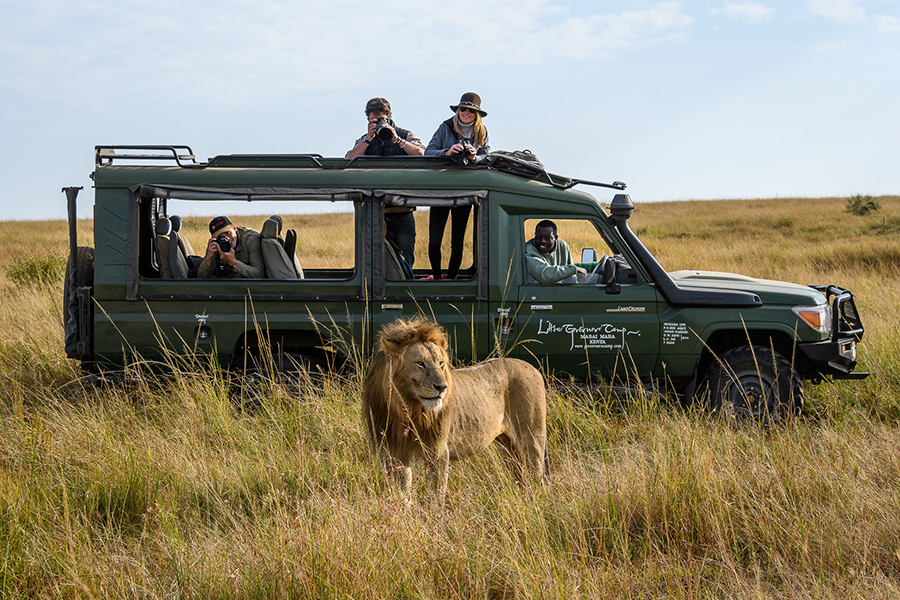
International flights land and depart from Jomo Kenyatta International Airport (JKIA) in Nairobi. It's a major flight hub in East Africa and the gateway to the rest of Kenya.
Light aircraft flights for fly-in safaris to the Masai Mara, Amboseli, Samburu and other areas depart from Wilson Airport, which is about 15km (10mi) away from JKIA. Ensure you have time between your international flight and domestic flight to make the transfer between the two airports – it can take up to 90 minutes for the road transfer on a good day.
Chartered flights are a great way to get around Kenya, saving you long road transfers and allowing for more time on safari. Road transfers from bush airstrips to lodges are conducted in 4X4 safari vehicles.
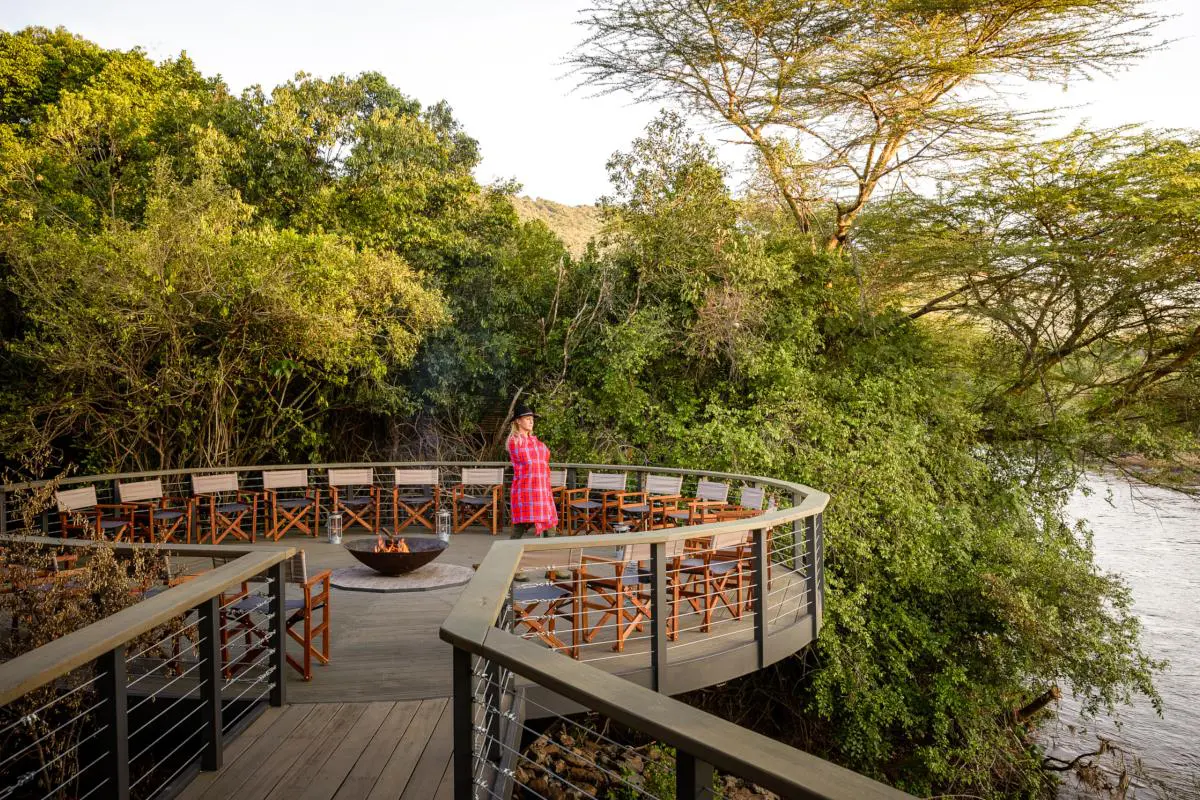
It's tricky to give costs for a Kenya safari because there are so many variables: the time of year you travel, the luxuriousness of the accommodation you prefer, whether you drive or fly between destinations, and what extra activities you add on like hot-air ballooning, spa treatments, mountain biking or even cultural visits.
At Go2Africa, we don't sell one-size-fits-all packages. We prefer to match your budget to give you a tailor-made Kenya experience, splurging and saving where it makes sense for your individual needs. A bare-bones budget may involve sharing transport but then upgrading to the area's best lodge. Or choosing a slightly more economical tented camp in order to spend a day or two longer on safari. There are no rules and thus no two Kenya safari itineraries are the same.
That being said, here is our Kenya travel guide with some ballpark figures for a safari, with transfers and accommodation included on a price-per-person-per-night (PPPN) basis:
| 4-Star Comfort | 4-Star Luxury | 5-Star Luxury | |||
|---|---|---|---|---|---|
| Low Season | High Season | Low Season | High Season | Low Season | High Season |
| $700 | $1000 | $800 | $1,600 | $1,800 | $2,200 |
Don't be shy to chat with your Africa Safari Expert about your budget and what you hope to get out of your vacation to Kenya. We advise clients to have an idea of a budget band that they feel comfortable working within and disclosing this at the earliest opportunity. This will hugely expedite the consultation process and you'll arrive at your ideal itinerary sooner.
It's easy to feel overwhelmed when thinking or talking about what you're willing to invest in your first-time safari in Kenya, but knowing what budget we can work with has a massive impact on planning a safari to Kenya.
In Kenya, it is customary – but not obligatory or mandatory – to give tips to service staff in gratitude and thanks for good service. Cash tips are the norm and can be handed to the relevant member of staff, the lodge or camp manager, or placed in a staff tip box – most safari lodges have these.
It's customary to tip taxi or shuttle drivers in Kenya; hotel, railway and airport porters; restaurant and bar staff; chambermaids; tour guides; game rangers and trackers; and golf caddies.
At restaurants and bars, 10–15% of your total bill is customary, although some establishments may include a service fee for larger groups.
For transfers, consider tipping about US$5 per couple in your group. Game lodge staff can be tipped about US$15 per couple per day, and rangers and trackers about US$10–15 per couple per day.
For more information about how to tip on safari, have a look at our complete tipping guide.
Accommodation in Kenya ranges from down-to-earth mobile camps that move with the Wildebeest Migration to very lavish lodges and modern city hotels. Here is our Kenya travel guide on some tried-and-tested favourites across the country:
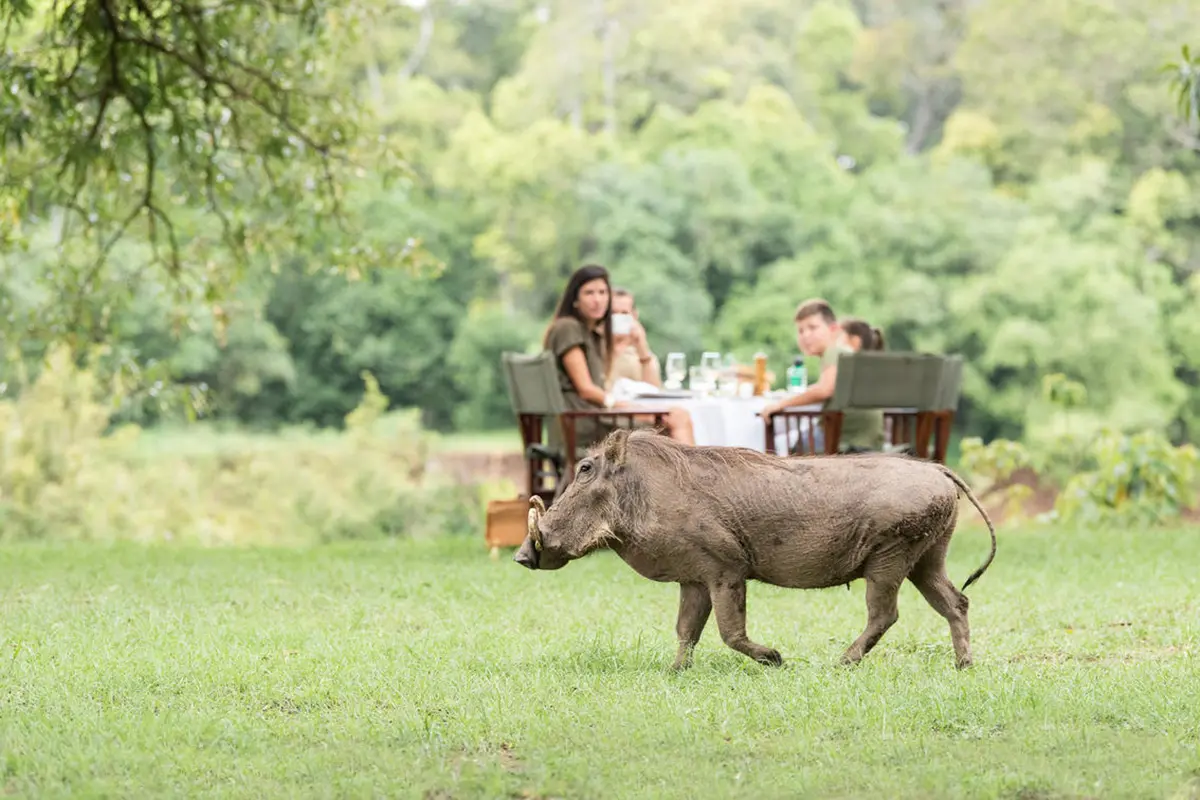
Kenya is a safari hotspot because it offers fantastic year-round game viewing, thanks to its moderate climate and wide-open spaces. Birders and photographers flock here too, and the Masai Mara is the perfect destination for first-time safari-goers in Kenya for numerous reasons:
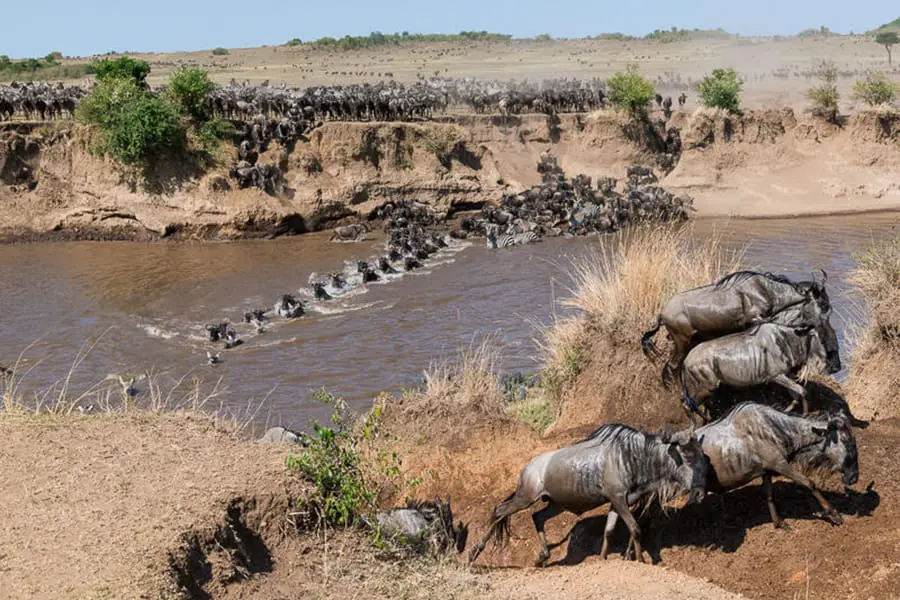
Arguably Kenya's biggest wildlife gem: the crossing of about two million wildebeest (and zebra and gazelle) over the Mara River into the Masai Mara National Reserve to feast on fresh grazing. They hang about for about four or five months, slowly mowing the Mara between about August and November, when they cross back into Tanzania's Serengeti National Park.
It's crucial to keep the following in mind when planning a safari to Kenya to see the Migration:
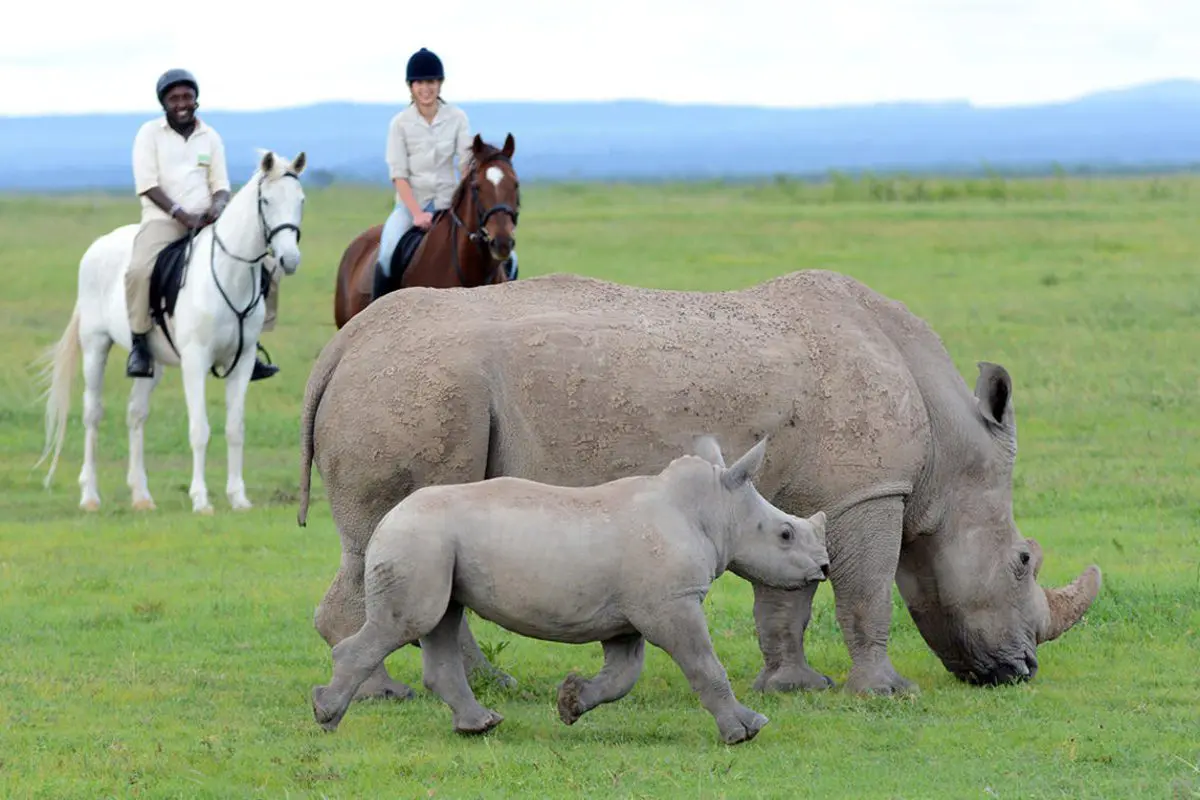
Although Kenya is technically a Big 5 destination in the sense that lion, leopard, buffalo, elephant and rhino are found here, it's difficult to see them all in the same place. Rhino are the rarest and very difficult to find – although some do still live in the Masai Mara, they are very seldom seen.
It's much easier to find leopards, lions, buffalo and elephant. The Migration brings out predators en masse and although they aren't part of the Big 5, cheetah are ideally adapted to the Mara's wide, flat, open plains that allow them to reach top speed with few obstacles. Witnessing a cheetah chase down its prey is truly one of the most thrilling game-viewing experiences you can have.
If you want to see rhino, then head to the Lewa Wildlife Conservancy. It has a successful and highly sophisticated conservation project that has seen these gentle giants thrive. Lewa is a safe haven for the critically endangered black rhino, as well as endangered Grevy's zebra and wild dog. Ol Pejeta Conservancy in Kenya's Laikipia region is another fantastic destination to see rhino. Ol Pejeta is home to two of the world's last remaining northern white rhinos, and a sanctuary for endangered black rhinos.
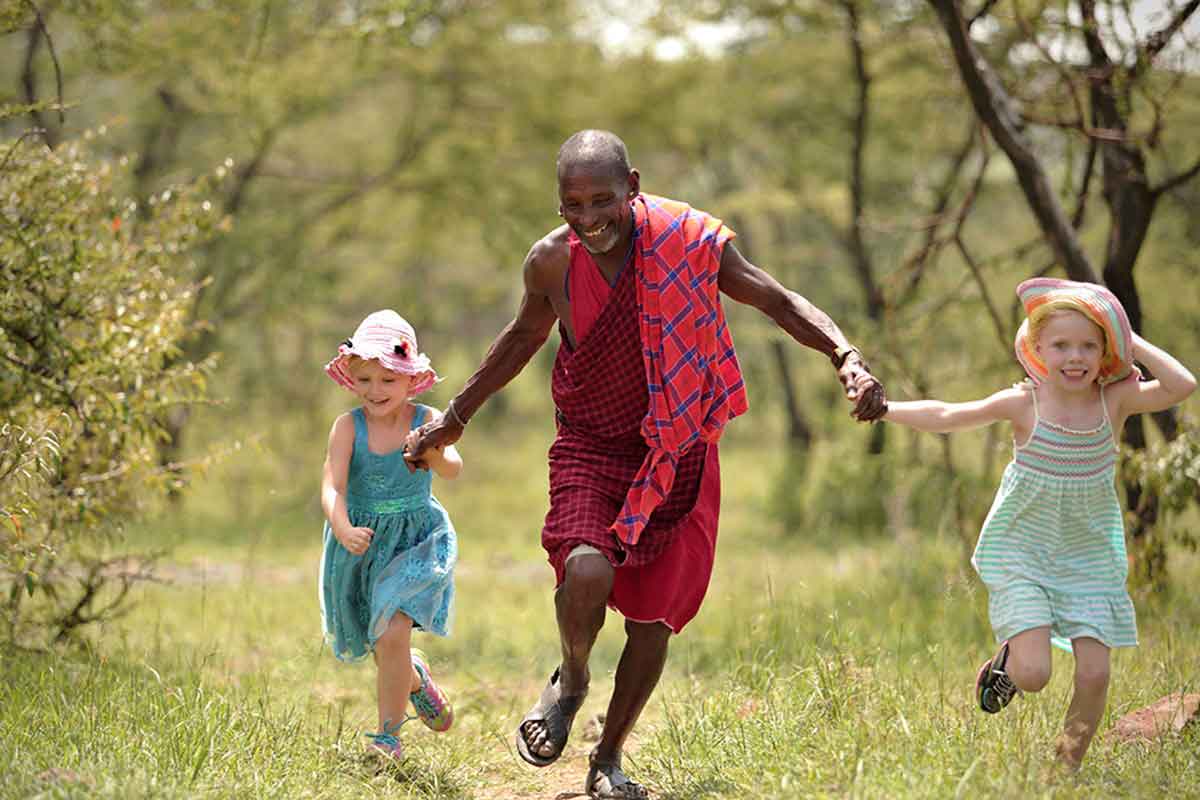
Getting your timing right depends on many things. Some travellers are locked by their personal schedules into a very specific time-frame, others want to go when they can get the best rates, while others want to go during peak safari season.
| Low / Green Season | High / Peak Season | ||||
|---|---|---|---|---|---|
| When | November to March | June to October Christmas to New Year |
|||
| Accommodation Rates | Low | High | |||
| Weather | Hot with occasional afternoon thundershowers | Cool and dry | |||
| Game Viewing Highlights | Migrant birds arrive – fantastic time for birdwatching Birthing season – lots of baby animals around |
Wildebeest Migration river crossings | |||
| Landscape | Lush and green | Dry and dusty | |||
| Wildebeest Migration | No | Yes |
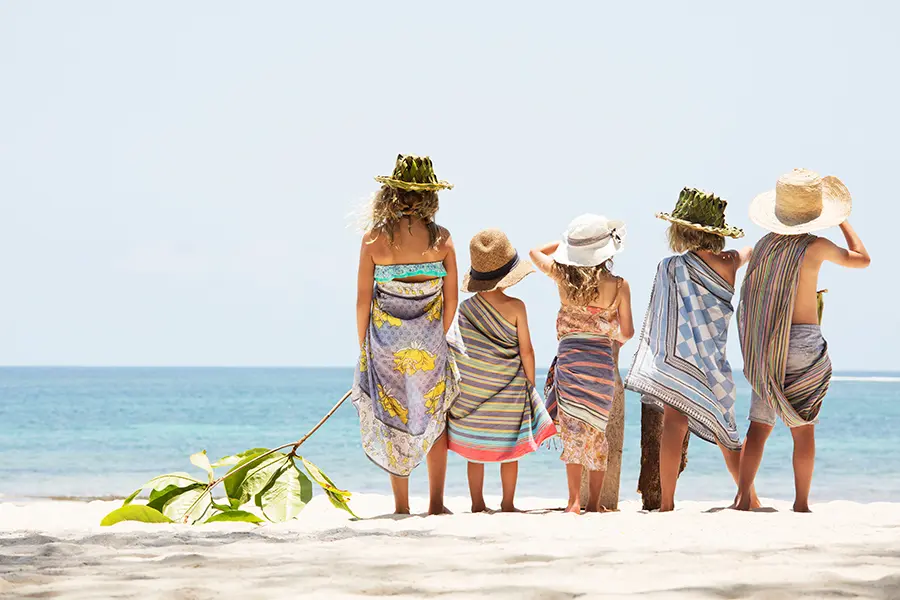
Kenya is an exciting destination for travellers with many options depending on your travel style:
| Traveller | Recommendation | ||
|---|---|---|---|
| First-time visitors on a Kenya safari | Round trip: Nairobi, Amboseli & Masai Mara | ||
| Second-time visitors to Africa | Samburu, Laikipia & Lewa | ||
| Photographers & birdwatchers | Low / Green Season | ||
| Bush-&-beach breaks | Combine safari with time in Diani | ||
| Adventure seekers | Laikipia for walking-, camelback- & fly-camping safaris Mount Kenya for hiking Kenyan coast for scuba diving |
||
| Eco-tourists | Lewa, Laikipia & Mara Conservancies | ||
| Cultural tourists | Samburu, Masai Mara & Amboseli |
Solo travellers, families and honeymooners should tailor their safari to their interests – if you love camping at home, for example, then consider time in an authentic tented camp. If you enjoy the high life, superb food and lavish spa treatments, then Kenya offers honeymooners and couples lots of luxury accommodation options.
As always, chatting with one of our Africa Safari Experts will uncover the best possible accommodation options for your personal travel wishes.
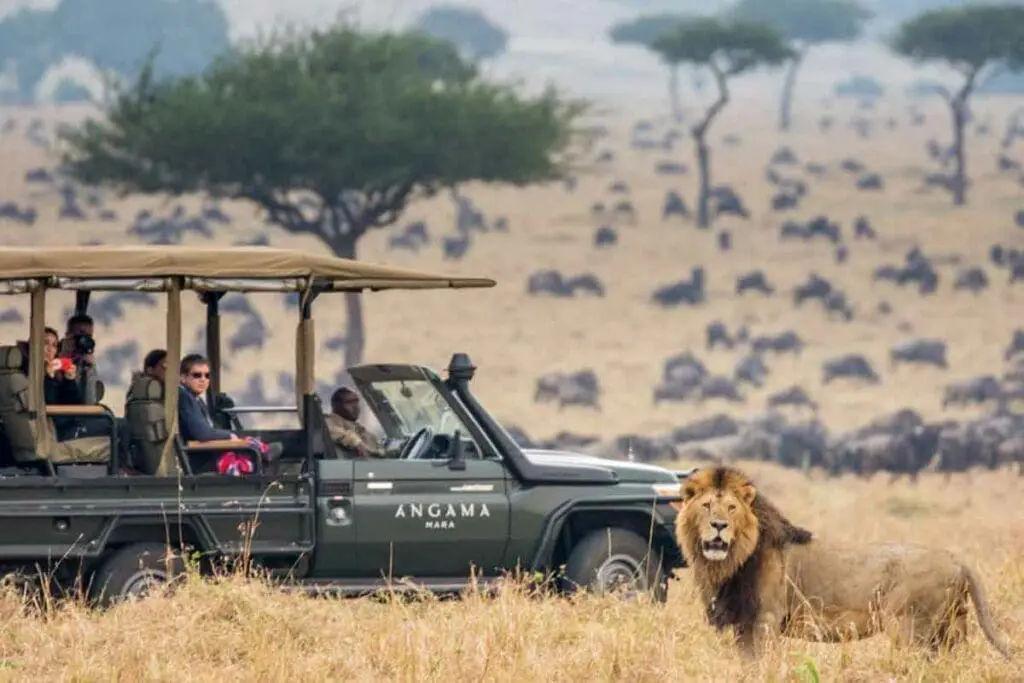
Kenya is a very safe country to visit. Its tourism industry is one of the most important in the country and thousands of travellers go on safari safely every month. As with all overseas travel, it's important to keep some pointers in mind:
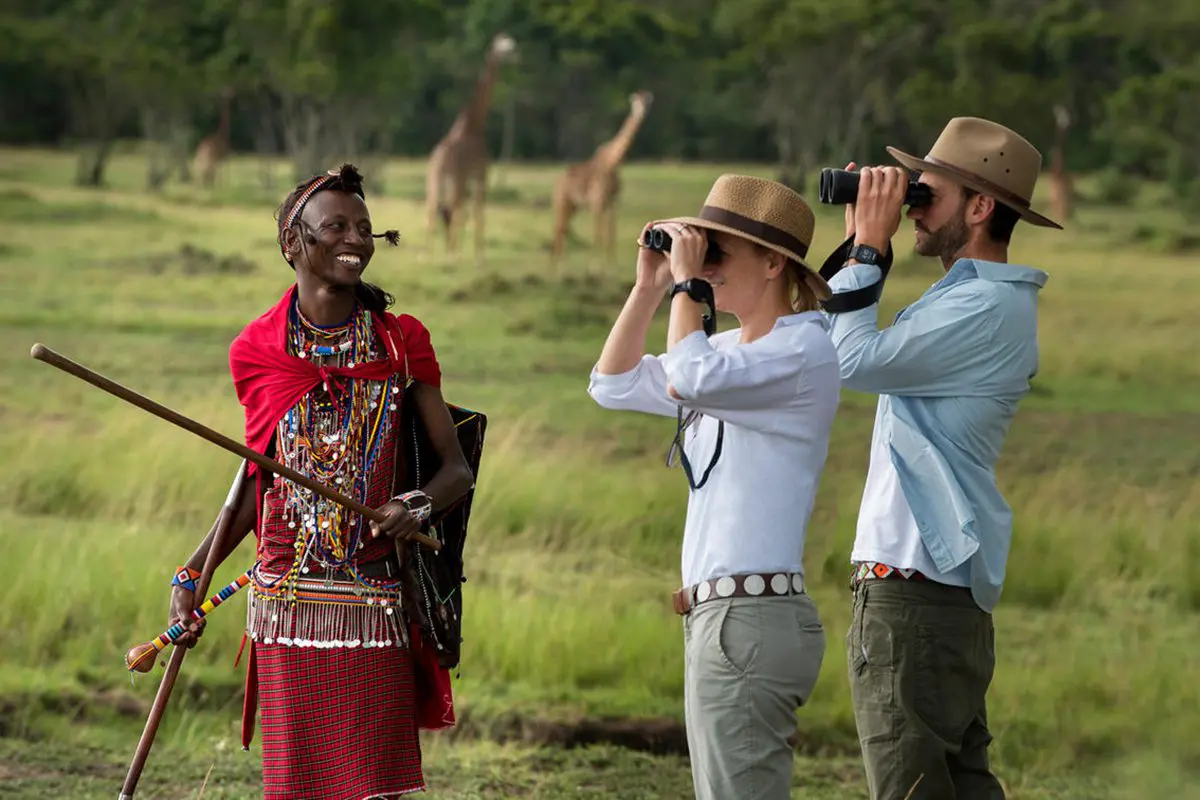
What to include in your Kenya safari packing list depends on the time of year you are visiting, the activities you will be undertaking and the luggage restrictions on the transport you will be using. Bear in mind that some hotels and lodges have laundry services, so you don't need multiple changes of clothing.
Kenyans generally dress casually in shorts, jeans, sandals and trainers. This attire is acceptable in public places unless otherwise stated. Restaurants and hotels do sometimes have dress codes, which are usually smart- or business-casual. Be sure to dress modestly if you are visiting a cultural centre or a place of worship.
Your Kenya safari packing list should include lightweight clothing in neutral colours such as khaki, brown, beige or green. Avoid white – it will get dirty quickly – and black, which can get very hot during the day and may attract mosquitoes at night. Trousers with removable, zippered lower legs are very practical as they can double as shorts.
Early-morning game drives in open vehicles can be very chilly, but the day will heat up quickly as the sun rises – so it's always best to dress in layers. Evening drives can also be cold, so consider a beanie, scarf and gloves if you're on safari during Kenya's winter months (June to August).
When you plan a trip to Kenya, there is so much to see and do that it can be difficult to whittle down your itinerary to just a select few. No matter what the best Kenya safari for you entails, from seeing the Great Migration to ethical encounters with giraffes and elephants in Nairobi, your trip can help conserve the environment and wildlife. Our Trips With A Purpose are a collection of safari itineraries that offer a visits or immersive, hands-on experiences that support local conservation projects. Leave Kenya better than you found it with these safari itineraries:
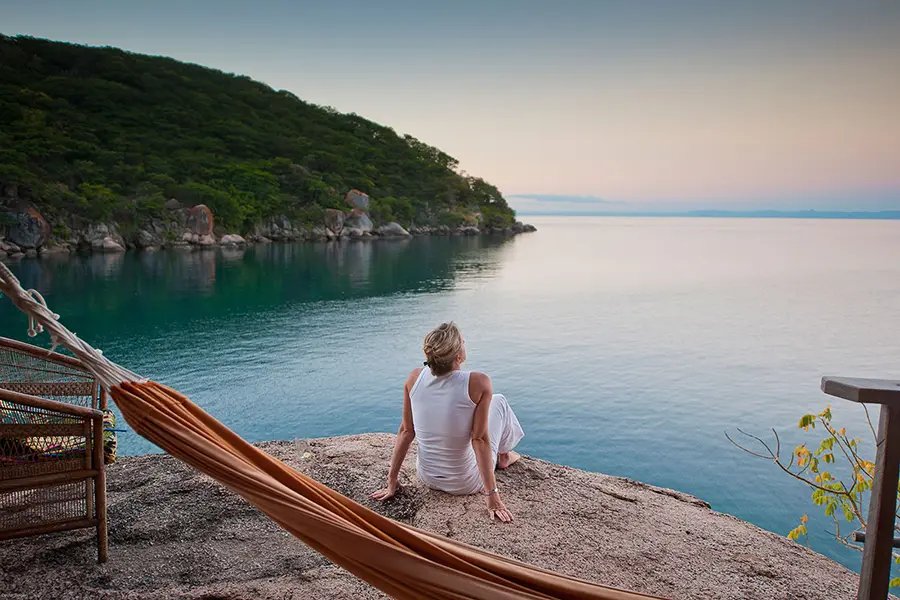
Kenya's capital, Nairobi, is a transport hub for East Africa and it's quite easy to get to other high-profile destinations in Africa.
| Country | Why Visit? | ||
|---|---|---|---|
| Malawi | Incredible snorkelling on Lake Malawi | ||
| Uganda | Fantastic gorilla trekking in Bwindi | ||
| Zimbabwe | See Victoria Falls plus classic safari | ||
| Zambia | Enjoy Victoria Falls plus a walking safari | ||
| Tanzania | Safari on the Serengeti and Big 5 viewing in Ngorongoro Crater | ||
| South Africa | Visit Cape Town, the Garden Route and the Kruger National Park |
Of course, if you have the funds and time, then you can combine Kenya with any African destination like the Seychelles, Namibia or even Botswana.
The below is a Kenya safari guide on tried-and-tested trip ideas that are completely customisable to meet your personal travel wishes.
These trips offer affordable Kenya safaris, combining accommodations that offer extremely comfortable facilities in fantastic locations, authentic safari experiences, and great value for money:
Not only will you stay in the finest accommodations and beautiful locations, but the below luxury Kenya safaris also give you the opportunity to experience unique activities like camelback safaris and traditional village visits. And there's no better way to crown your luxury Kenya safari than with some R&R on a tropical island.
With over 25 years of traversing safari destinations under their belt, our African Safari Experts are perfectly positioned to craft a Kenya holiday that ticks all your boxes. Get in touch and start planning the safari of your dreams: